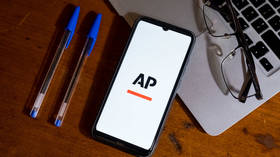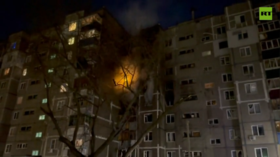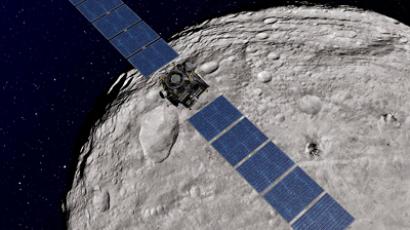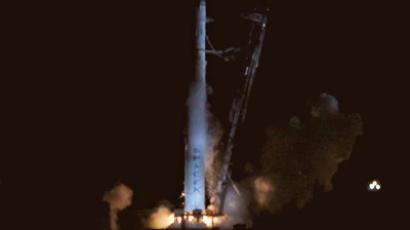Inventor Elon Musk reveals new super-fast ‘Hyperloop’ transport
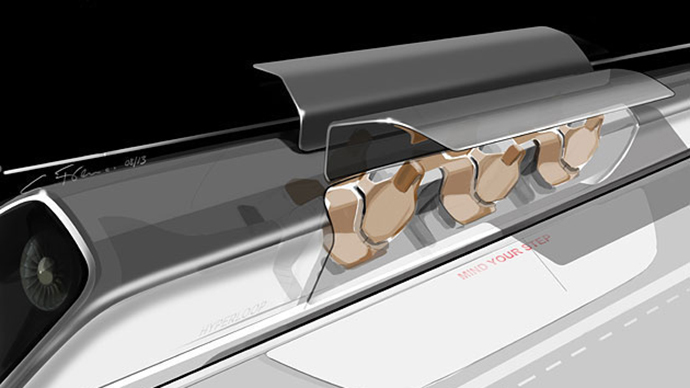
The billionaire inventor and entrepreneur behind PayPal and SpaceX unveiled details on Monday about a new transportation system that might someday shuttle people around the world quicker than an airplane and at a fraction of the cost.
Elon Musk, the South African-born scientist who also oversees operations of the Tesla electric car, revealed on Monday the most information yet about his Hyperloop project, a transportation system that he previously said could move people from Los Angeles, California to San Francisco in half an hour.
Details about Musk’s most elusive endeavor have been scarce until now, but on Monday he disclosed plans that could help push the project towards becoming a reality sometime soon.

Musk’s presentation of the Hyperloop concept, which came along
with futuristic renderings of sleek aluminum passenger pods,
would travel in an enclosed environment shielded by steel tubes,
mounted on pylons 50 to 100 yards apart at speeds surpassing that
of commercial jet liners.
Monday's reveal included both illustrations and specifications
for an initial system to connect the city of Los Angeles to San
Francisco.
According to Musk, the proposed pod system could transport passengers as well as vehicles.
“You just drive on, and the pod departs,” Musk told Bloomberg Businessweek in his first interview about the Hyperloop.
Though Hyperloop resembles another long-existing idea called pneumatic tubes, a concept that has been the subject of science fiction lore for decades, Musk says that the Hyperloop represents a middle ground between the complete vacuum environment of pneumatic tubes, instead running at low pressure.
Within the metal tubes passenger pods would travel atop thin skis
made out of an alloy called inconel, which has been used on
SpaceX vehicles and can withstand both high pressure and heat. At
the front of the pods would be air jet inlets, not unlike those
found on the Concorde. Air would then be compressed from the nose
and sent into the skis. Magnets would also be used on the skis,
giving the pods thrust through the use of an electromagnetic
pulse.
Musk says that, relative to the environment inside of the metal
tubes themselves, pods would be traveling just below the speed of
sound, meaning they would not cross the sound barrier and thus
not produce a sonic boom.
In revealing technical specifications and the potential cost for
the Hyperloop transit system Musk also made pointed criticism at
California's current high-speed rail plans, saying it was neither
affordable or terribly fast in comparison to bullet trains
operating elsewhere in the world.
If ever constructed, the Hyperloop would travel at upwards of 800
miles-per-hour (966 kmh), far surpassing the capabilities of the
high-speed train currently being proposed between LA and San
Francisco.

Last week, Musk said he started dreaming up Hyperloop when he heard about the high-speed rail being discussed in California and found it “somewhat disappointing.”
"It's actually worse than taking the plane. I get a little sad
when things are not getting better in the future,” Musk told
fellow entrepreneur Richard Branson during a Google Hangout of
the proposed rail system.
On Monday Musk piled on criticism of the proposed California
bullet train. “You have to look
at what they say it will cost vs. the actual final costs, and I
think it’s safe to say you’re talking about a $100 billion-plus
train,” Musk said, adding that the train project is also
proving to be an impossible tangle of land rights.
For years now, Musk has only offered vague insight as to what the Hyperloop system would consist of. He’s previously said the design will be open source, and "It does involve a tube, but not a vacuum tube."
"You want a transport system that is roughly twice as fast as the next best alternative, that costs less, that is safer, that is not subject to weather and is more convenient," he said to Branson. "If there were such a thing, I think most people would take it. In fact, it would increase the travel between the city pairs because of the increased convenience."
According to Musk the Hyperloop could be built in California for $6 billion if carrying passengers, or $10 billion for pods that can also ferry vehicles. The entrepreneur believes his concept would ultimately be four times faster than the state's planned train and come in at one-10th the cost.

As for tickets, Musk believes they would be far more affordable
than airfare. In addition, solar arrays attached to the Hyperloop
tubes themselves would conceivably make the entire system
self-sustaining.
Even after blueprints have finally been revealed this week, however, the man behind the project has indicated he'll leave the endeavor up to someone else, which would be a marked departure from his existing ventures.
"I think I kind of shot myself by ever mentioning the Hyperloop," he said last week a Tesla earnings call last week. "I don't have any plans to execute, because I must remain focused on SpaceX and Tesla."
"I have to focus on core Tesla business and SpaceX business, and that's more than enough," added Musk. "If nothing happens for a few years, with that I mean maybe it could make sense to make the halfway path with Tesla involvement," he said, according to Gizmodo. "But [what] I would say is, you shouldn't be speculative."
Martin Archer, a physicist at London’s Imperial College, told the BBC that if anyone is going to be skeptical, they should rethink what Musk has been able to make happen before.
"He's the guy who made electric cars go fast with Tesla, which many people didn't think would be possible; and he's the head of SpaceX which is the only commercial rocket builder that has managed to hook up with the International Space Station,” Archer said.
"[Hyperloop] is quite an old science fiction idea but Elon Musk is the sort of man who could make it work," he added.







